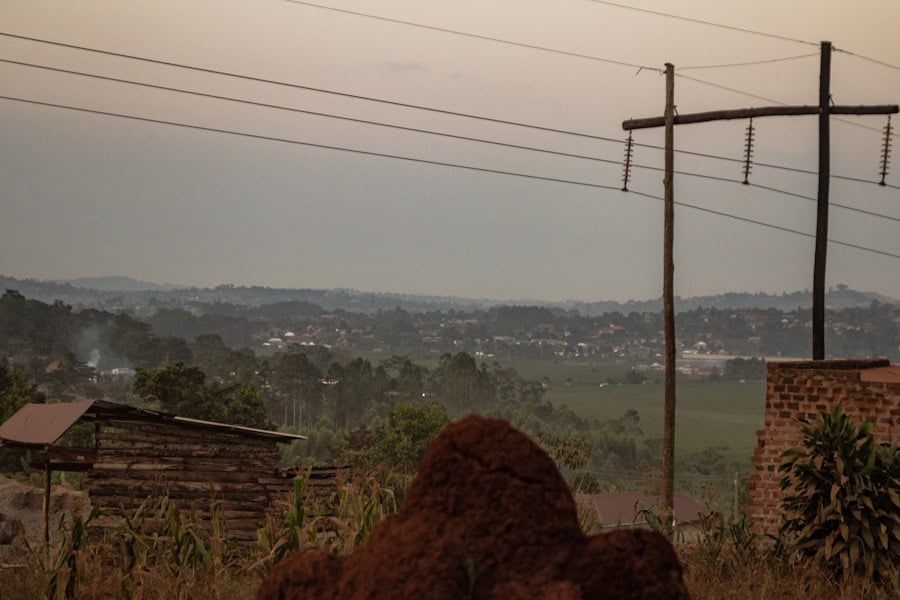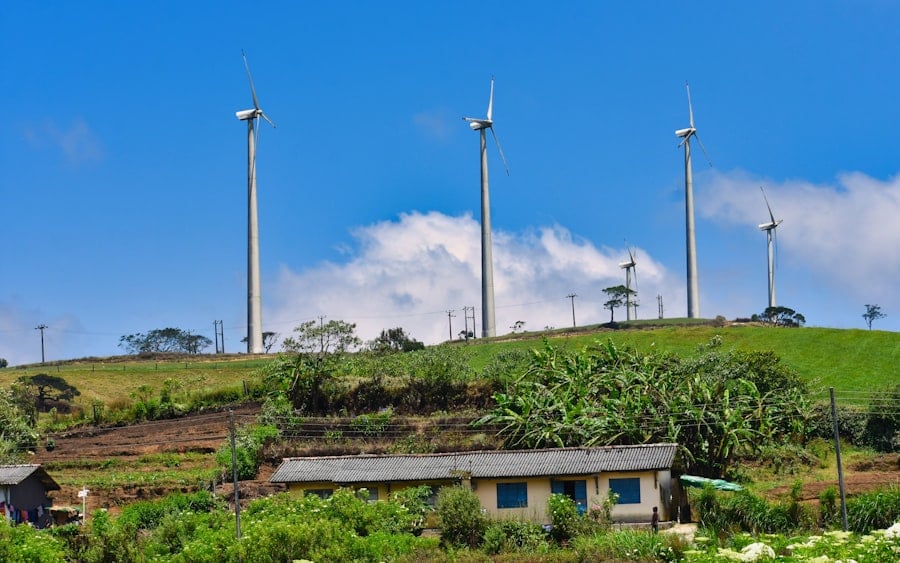Sustainable electrification in Africa is a pressing issue that intertwines with the continent’s socio-economic development, environmental sustainability, and energy security. With over 600 million people lacking access to electricity, the need for innovative and sustainable solutions has never been more urgent. Electrification is not merely about providing power; it is about empowering communities, enhancing educational opportunities, improving healthcare services, and fostering economic growth.
The challenge lies in ensuring that these electrification efforts are sustainable, meaning they can be maintained over the long term without depleting resources or harming the environment. The concept of sustainable electrification encompasses a variety of approaches, including the integration of renewable energy sources such as solar, wind, and hydroelectric power. These methods not only provide cleaner alternatives to fossil fuels but also promote energy independence and resilience against climate change.
As Africa grapples with the dual challenges of energy poverty and climate change, sustainable electrification emerges as a vital pathway toward a more equitable and prosperous future for its people. Are You Working on Solar Innovation or Clean Energy Access? Join us to receive updates.
Key Takeaways
- Sustainable electrification in Africa is crucial for economic development and improving quality of life.
- Donor support is essential for funding electrification projects in Africa due to limited resources and infrastructure.
- Top donors play a significant role in promoting sustainable electrification through funding and expertise.
- Sustainable electrification has a positive impact on African communities, improving access to education, healthcare, and economic opportunities.
- Challenges in electrification projects in Africa present opportunities for innovation and collaboration between public and private sectors.
The Importance of Donor Support for Electrification Projects in Africa
Donor support plays a crucial role in the success of electrification projects across Africa. Many countries on the continent face significant financial constraints that hinder their ability to invest in large-scale infrastructure projects. International donors, including governments, non-governmental organizations (NGOs), and private foundations, provide essential funding and resources that enable these projects to take off.
This support is not just financial; it often includes technical expertise, capacity building, and knowledge sharing, which are vital for the successful implementation of electrification initiatives. Moreover, donor support helps to leverage additional investments from other sources, creating a multiplier effect that can amplify the impact of initial funding. For instance, when donors commit to financing a project, it can attract private sector investment and encourage local governments to allocate their own resources toward electrification efforts.
This collaborative approach fosters a sense of ownership among local stakeholders and ensures that projects are tailored to meet the specific needs of communities.
The Role of Top Donors in Promoting Sustainable Electrification

Top donors have a significant influence on the direction and effectiveness of electrification projects in Africa. Organizations such as the World Bank, African Development Bank, and various bilateral aid agencies have made substantial commitments to support sustainable energy initiatives. These donors often set strategic priorities that align with global development goals, such as the United Nations Sustainable Development Goals (SDGs), particularly Goal 7, which aims to ensure access to affordable, reliable, sustainable, and modern energy for all.
In addition to financial contributions, top donors often play a pivotal role in shaping policy frameworks and best practices for electrification projects. They provide guidelines on sustainability standards, encourage the adoption of innovative technologies, and promote stakeholder engagement. By fostering partnerships between governments, NGOs, and the private sector, these donors help create an enabling environment for sustainable electrification efforts to thrive.
The Impact of Sustainable Electrification on African Communities
The impact of sustainable electrification on African communities is profound and multifaceted. Access to electricity transforms lives by enabling essential services such as healthcare and education. For instance, clinics equipped with reliable power can store vaccines and operate medical equipment, significantly improving health outcomes.
Similarly, schools with electricity can extend learning hours and provide students with access to digital resources that enhance their education. Beyond immediate benefits, sustainable electrification also stimulates economic development. Small businesses can thrive with access to electricity, allowing entrepreneurs to operate longer hours and utilize modern technologies.
This economic empowerment leads to job creation and improved livelihoods for families. Furthermore, when communities invest in renewable energy solutions like solar microgrids or wind turbines, they not only gain energy independence but also contribute to environmental sustainability by reducing reliance on fossil fuels.
Challenges and Opportunities in Electrification Projects in Africa
Despite the significant progress made in electrifying parts of Africa, numerous challenges persist. One major hurdle is the lack of infrastructure and investment in rural areas where most energy poverty exists. Many remote communities are not connected to national grids due to geographical barriers or high costs associated with extending infrastructure.
Additionally, political instability and regulatory challenges can impede project implementation and deter potential investors. However, these challenges also present opportunities for innovative solutions. The rise of decentralized energy systems, such as off-grid solar solutions and community-based energy cooperatives, offers a viable alternative to traditional grid expansion.
These models empower local communities to take charge of their energy needs while fostering economic development through job creation in installation and maintenance services. Moreover, advancements in technology are making renewable energy solutions more affordable and accessible than ever before.
Case Studies of Successful Electrification Projects Supported by Top Donors

Several successful electrification projects across Africa exemplify the positive impact of donor support in promoting sustainable energy solutions. One notable example is the Solar Home Systems project in rural Kenya, funded by the World Bank and implemented by local NGOs. This initiative provided thousands of households with solar panels that generate electricity for lighting and small appliances.
The project not only improved living conditions but also increased household incomes as families could engage in income-generating activities after dark. Another inspiring case is the Energizing Finance initiative in Nigeria, supported by various international donors including the UK’s Department for International Development (DFID). This program focuses on mobilizing private sector investment in off-grid solar solutions for underserved communities.
By providing grants and technical assistance to local entrepreneurs, the initiative has successfully expanded access to electricity for millions while creating jobs and stimulating local economies.
The Future of Sustainable Electrification in Africa
The future of sustainable electrification in Africa holds immense potential as countries increasingly recognize the importance of clean energy solutions. With global momentum shifting toward renewable energy sources, African nations are beginning to prioritize investments in solar, wind, and hydroelectric power as part of their national development strategies. This shift is further supported by international commitments to combat climate change and promote sustainable development.
As technology continues to advance, we can expect even more innovative solutions to emerge in the electrification landscape. For instance, battery storage technologies are becoming more efficient and affordable, enabling communities to store excess energy generated during peak sunlight hours for use during nighttime or cloudy days. Additionally, digital platforms are facilitating better energy management and distribution systems that enhance efficiency and reliability.
The Role of Public-Private Partnerships in Electrification Initiatives
Public-private partnerships (PPPs) are increasingly recognized as a vital mechanism for driving electrification initiatives in Africa. These collaborations leverage the strengths of both sectors: public entities provide regulatory frameworks and social mandates while private companies bring investment capital and technical expertise. By working together, they can create sustainable business models that address energy access challenges effectively.
One successful example of a PPP is the partnership between the government of Rwanda and private solar companies to implement off-grid solar solutions across rural areas. This collaboration has resulted in thousands of households gaining access to clean energy while creating jobs within local communities. Such partnerships not only enhance project viability but also ensure that electrification efforts are aligned with national development goals.
The Importance of Renewable Energy in Sustainable Electrification
Renewable energy is at the heart of sustainable electrification efforts in Africa. As countries strive to meet their energy needs while minimizing environmental impact, renewable sources such as solar, wind, and biomass offer viable alternatives to traditional fossil fuels. These sources are abundant across the continent and can be harnessed locally, reducing dependence on imported fuels and enhancing energy security.
Moreover, investing in renewable energy contributes to climate resilience by mitigating greenhouse gas emissions associated with conventional energy production. As African nations face increasing climate-related challenges such as droughts and floods, transitioning to renewable energy becomes not just an environmental imperative but also an economic necessity that supports sustainable development.
Strategies for Ensuring Long-Term Sustainability of Electrification Projects
To ensure the long-term sustainability of electrification projects in Africa, several strategies must be employed. First and foremost is community engagement; involving local stakeholders from project inception fosters a sense of ownership that is crucial for ongoing maintenance and support. Training local technicians to manage systems ensures that communities have the skills needed to sustain their energy solutions over time.
Additionally, establishing clear regulatory frameworks that support renewable energy investments is essential for attracting private sector participation. Governments should create incentives for businesses to invest in electrification projects while ensuring that policies promote equitable access to energy for all citizens. Finally, monitoring and evaluation mechanisms should be put in place to assess project impacts continuously and adapt strategies as needed.
The Continued Need for Donor Support in African Electrification
As Africa continues its journey toward sustainable electrification, donor support remains a critical component of success. The challenges are significant but not insurmountable; with continued investment from international donors alongside innovative public-private partnerships, there is hope for millions still living without electricity. By prioritizing sustainable solutions that empower communities and promote economic growth, we can pave the way for a brighter future where every African has access to reliable electricity.
In conclusion, sustainable electrification is not just an energy issue; it is a fundamental driver of development that touches every aspect of life in African communities. As we look ahead, it is imperative that we maintain momentum through collaborative efforts that harness the strengths of all stakeholders involved—governments, NGOs, private sector actors, and local communities alike—to ensure that no one is left behind in this vital endeavor.









































